Search Results for 'Paul McGinley'
11 results found.
Six decades on, Salthill-based team who won minor title get together
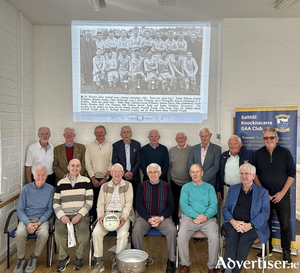
A unique event was held recently in Arus Bothar na Trá, to celebrate the 60th anniversary of a Salthill- based team winning the Galway County minor football championship. Never before had the group got together in the last 60 years.
Montpellier Terrace — a slice of Galway history
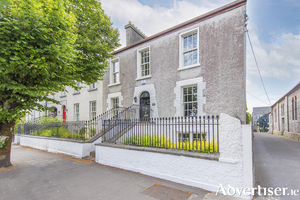
Whether named after the French city or another location, the terrace of spectacular period homes that is Montpellier Terrace is an iconic location steeped in Galway history.
Sports shorts

•Golf: Galway's Ronan Mallarney continues to lead the field at the AIG Irish Amateur Close Championship at Ballybunnion. The 23-years-old will be hoping to follow in the footsteps of Irish professionals Shane Lowry, Rory McIllroy, Graeme McDowell, Peter Lawrie, Padraig Harrington, Darren Clarke and Paul McGinley. Another Galway youngster, Devin Morley from Oughterard is currently lying in seventh place after the two rounds on 142.
New book on Salthill tells the tale of one of Ireland’s first tourist resorts
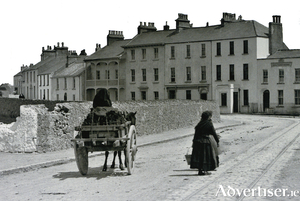
Paul McGinley’s new book, Salthill - A History, Part 1, begins with a most informative historic timeline, taking the reader from 1557 to 1901. Early documents were sparse but in 1797, a French traveller “wrote of young damsels going to refresh their charms in the sea about two miles from the city”.
How World War I changed Galway’s horsepower
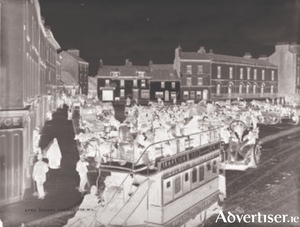
Salthill began to really liven up with the arrival of the Dublin to Galway train in 1851. Holidaymakers arrived at the resort in some style. Trains were met at the station by horse-drawn ‘cars’ or ‘buses’ which went out directly to the seaside.
The boy who burnt his hand
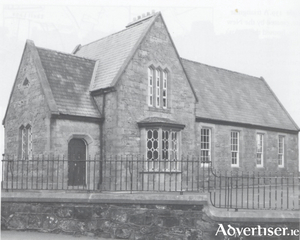
On Sunday evening March 25 1866, the two children of the schoolmaster Mr St George, were playing near the fire together in the Mission School (now Scoil Fhursa), when suddenly there was an explosion. The elder child burnt his hand. His injuries put him into a ‘very precarious position’. I am not sure how serious that was, but the story took an insidious turn when it was given out that ‘some malicious person climbed on the roof, and threw a packet of gunpowder down the chimney.’
Salthill - ‘One of the nicest localities in the Kingdom.’
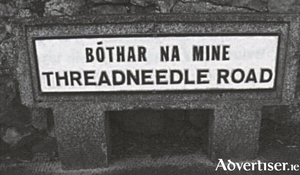
Salthill was a quiet fishing village, existing independently from Galway town, until the Victorian obsession for health and fresh air eventually came to the west of Ireland. Invigorating salt-sea baths, salt-water showers, and, as I mentioned in former weeks, confined bathing opportunities for women; but where men could hire togs for some manly swimming and diving. By 1828 it was noted that there were 40 to 50 neat lodges along its sea shore, where there were only two or three a few years before.
Salthill’s Lazy Wall - a summer institution
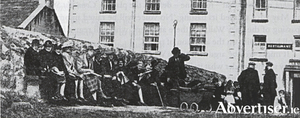
Physically, of course, Salthill has changed dramatically since the early years of the last century when the beaches were rocky, and the scattered houses and lodges offered sea baths and confined bathing geared for the protection of women’s modesty. Men, no doubt, could show off their swimming and diving skills with abandonment, but could risk becoming the subject of comment (adverse or otherwise) of a unique Salthill ‘People’s Parliament’ known to all as the Lazy Wall.
‘A thrifle more to the wesht, I’ll trouble ye, me lady’

I n the late 19th century women and girls rarely swam in the sea. It was considered unseemly. Yet in the belief that sea water was good for the skin, hotels and guest houses along the seafront at Salthill proudly offered sea baths, and 'showers' which could be enjoyed in any weather.
Seapoint Corner about one hundred and fifty years ago
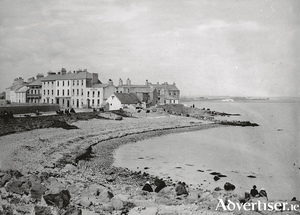
This was Seapoint Corner c1865. The buildings we see, running from the left, are Prospect Lodge; Corrig View; Elm View; Prairie House with the balcony, which was built 1855-1861 by Colman O’Donohoe who had obviously spent some time in America; Beachmount; Villa Marina, which had the sign Michael Horan, Grocer over the door; Sunnyside Lodge; Seapoint House; then a gap which led into Seapoint Terrace; and finally, the thatched building which was George Fallon’s Baths. The sign on his gable read Hot Baths and Bathing, No Refunds and his family operated the baths business at least from 1855 to 1894

